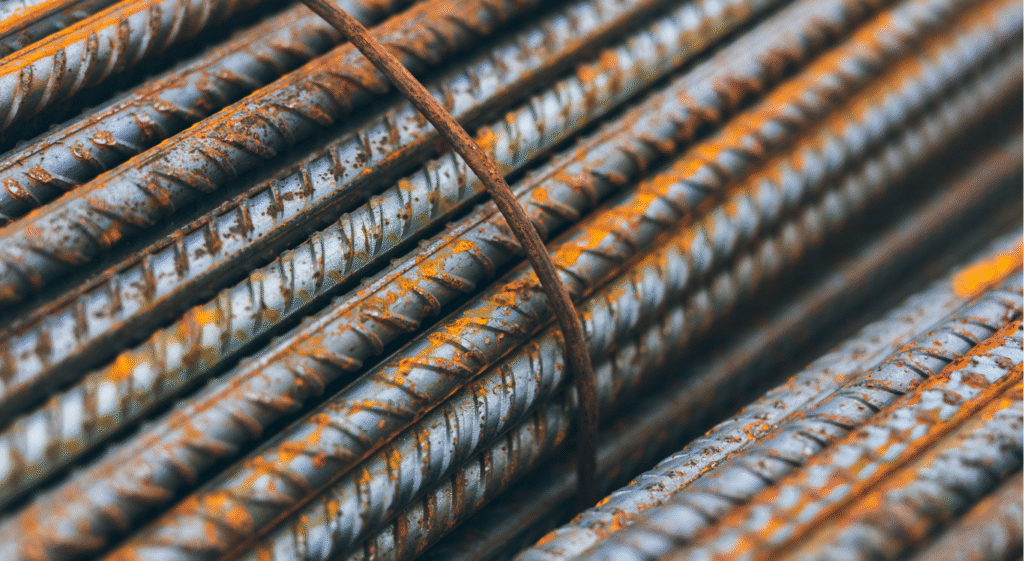When we talk about building strong and safe structures, TMT (Thermo Mechanically Treated) steel bars play a major role. Two of the most widely used grades in construction are FE500 and FE500D. Both belong to the “FE” category, which stands for the yield strength of the bar, measured in Newton per square millimeter (N/mm²). The number “500” means that these bars have a minimum yield strength of 500 N/mm², making them strong enough for heavy construction projects such as high-rise buildings, bridges, dams, and industrial structures.
The “D” in FE500D stands for ductility. Ductility refers to the ability of a material to deform without breaking. In simple words, FE500D is more ductile than FE500, which means it can bend or stretch a little more before cracking. This feature becomes very important in areas that experience earthquakes or heavy wind loads because a ductile bar can absorb sudden shocks better.
So, while both grades have the same strength, FE500D offers higher ductility, better elongation percentage, and improved seismic resistance. That’s why engineers often recommend FE500D for projects where safety and flexibility are the top priorities.
Mechanical Properties: FE500 vs. FE500D
The difference between FE500 and FE500D becomes clearer when we compare their mechanical properties. As mentioned earlier, both have the same minimum yield strength of 500 N/mm², but the elongation capacity is where things change. FE500D bars have around 16% elongation, whereas FE500 bars generally offer about 12% elongation. This extra elongation makes FE500D bars more flexible and less brittle under pressure.
Another important aspect is the tensile strength. FE500D bars have higher tensile strength compared to FE500, which means they can resist higher pulling forces without breaking. This becomes crucial during natural disasters such as earthquakes, where the building structure undergoes sudden tension and compression.
In addition, FE500D bars have fewer impurities like sulfur and phosphorus. These impurities can reduce the strength and ductility of steel, making it prone to cracks under stress. With controlled levels of impurities, FE500D becomes more reliable and durable. This is why FE500D is considered a safer option in high-risk zones, even though FE500 is still widely used for general construction.
Applications of FE500 and FE500D in Construction
Both FE500 and FE500D have their own set of applications depending on the requirements of the project. FE500 is often chosen for general construction purposes such as residential buildings, commercial complexes, and small-scale infrastructure. It provides sufficient strength and durability for projects that are not exposed to high seismic activity or extreme conditions.
On the other hand, FE500D is preferred for critical structures that demand higher safety standards. It is commonly used in high-rise buildings, bridges, flyovers, dams, and metro projects. Its enhanced ductility makes it highly suitable for regions prone to earthquakes, cyclones, and other natural forces. For example, in earthquake-prone zones, engineers specifically recommend FE500D to ensure that the building can withstand lateral shocks without major damage.
In summary, if the project is in a stable area with no extreme risks, FE500 can be a cost-effective choice. However, if safety and flexibility are the priorities, FE500D is the clear winner. Engineers often weigh the cost against the risk factors before making the final decision.
Cost Factor and Market Availability
When comparing FE500 and FE500D, cost is another factor that influences the decision. Since FE500D has better ductility and undergoes stricter quality control to reduce impurities, it is usually priced slightly higher than FE500. The price difference may not be very large, but for large-scale projects, even a small variation can impact the overall budget.
That said, many builders consider the additional cost of FE500D as an investment in safety. In regions with frequent earthquakes or cyclones, using FE500D can actually reduce repair costs and prevent structural failures in the long run. It is also becoming more widely available in the market as demand increases, making it easier for contractors to choose it over FE500.
FE500, on the other hand, remains popular in smaller projects and regions where safety concerns are minimal. It is cost-effective and provides enough strength for most everyday construction needs. Thus, the decision often comes down to balancing safety requirements with budget constraints.
Conclusion: Which is Better – FE500 or FE500D?
Both FE500 and FE500D are strong and reliable grades of TMT bars, but their difference lies in ductility, safety, and suitability for specific projects. FE500 is ideal for general construction and budget-friendly projects, while FE500D stands out in terms of ductility, earthquake resistance, and long-term durability.
If your project is located in a high-risk area or involves critical infrastructure, FE500D is undoubtedly the better choice despite the slightly higher cost. On the other hand, if you are building a residential or commercial property in a stable region, FE500 can meet your needs effectively.
Ultimately, the choice between FE500 and FE500D should be made after considering factors like safety, location, type of structure, and budget. Consulting with an experienced structural engineer can also help in making the right decision.
FAQs
Q1. What does FE500 mean?
FE500 means that the TMT bar has a minimum yield strength of 500 N/mm², making it suitable for heavy construction projects.
Q2. What is the difference between FE500 and FE500D?
Both have the same strength, but FE500D has higher ductility, better elongation (16% vs. 12%), and improved seismic resistance.
Q3. Which is better for earthquake-prone areas?
FE500D is recommended for earthquake-prone areas because it is more ductile and can absorb sudden shocks better.
Q4. Is FE500 cheaper than FE500D?
Yes, FE500 is generally cheaper than FE500D, but the latter is often considered a safer long-term investment.
Q5. Can both grades be used for residential buildings?
Yes, both can be used, but FE500D is the safer option if the building is in a high-risk zone.


